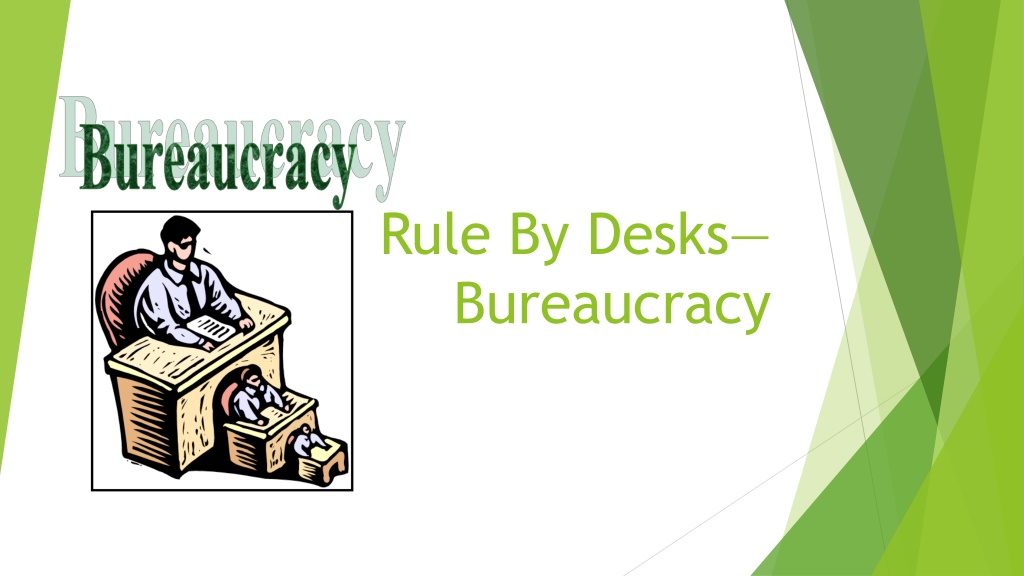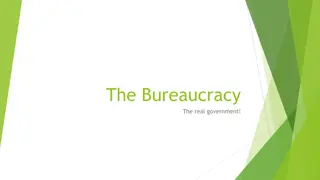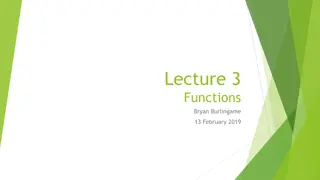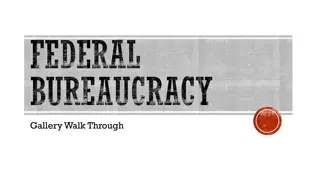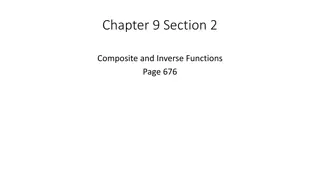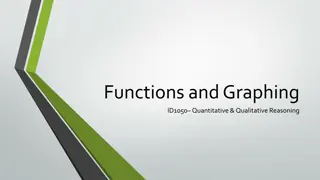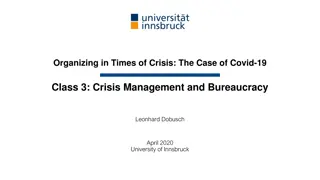Understanding Bureaucracy: Structure and Functions
Professional corps of unelected officials organized in a pyramid hierarchy function under impersonal rules. They are hired through Civil Service or Foreign Service Exams. Bureaucratic bodies include Cabinet departments, Regulatory Agencies, Government Corporations, and Independent Executive Agencies, overseeing various aspects of the economy. Regulatory Agencies create regulations to protect people, enforce them, and are closely tied to interest groups.
Download Presentation

Please find below an Image/Link to download the presentation.
The content on the website is provided AS IS for your information and personal use only. It may not be sold, licensed, or shared on other websites without obtaining consent from the author. Download presentation by click this link. If you encounter any issues during the download, it is possible that the publisher has removed the file from their server.
E N D
Presentation Transcript
Rule By Desks Bureaucracy
A professional corps of unelected officials organized in a pyramid hierarchy, functioning under impersonal uniform rules and procedures.
How are they hired? Civil Service Exam https://www.csealearningcenter.org/demo/templates/contentTemp.cfm?TID= 1 Foreign Service Exam https://www.csmonitor.com/World/2011/0127/Are- you-smarter-than-a-US-diplomat-Take-our-Foreign-Service-Exam/Economics- 101 Meritocracy .
4 million employees; 2.8 million are civilians or civil servants President only appoints 3% (patronage or political appointments) 15 cabinet level departments 200+ independent agencies with 2,000+ bureaus, divisions, branches, etc. Biggest - Department of Defense, U.S. Postal Service, Veterans Administration
Bureaucracies are organized into: Cabinet departments Regulatory Agencies Government Corporations Independent Executive Agencies
15 Cabinet Departments Each has its own staff & budget Each is supervised by a secretary (confirmed by Senate) Each is considered expert in own area Homeland Security is the newest (2002)
Bureaucracies are organized into: Cabinet departments Regulatory Agencies Government Corporations Independent Executive Agencies
Regulatory Agencies Oversee a specific aspect of the economy Intended to operate independently of Congress and the Executive Create regulations that protect people Can enforce regulations by judging disputes Headed by a commission (Confirmed by Congress) rather than a secretary Once confirmed, cannot be removed without cause Closely involved with interest groups that want to influence regulations Federal Communication Commission Federal Reserve Board
Bureaucracies are organized into: Cabinet departments Regulatory Agencies Government Corporations Independent Executive Agencies
Government Corporations Perform service for a fee, like a private business Government owned May or may not make a profit, but serve a public need USPS is the largest Amtrak Corporation for Public Broadcasting
Bureaucracies are organized into: Cabinet departments Regulatory Agencies Government Corporations Independent Executive Agencies
Independent Executive Agencies All other executive bodies Established by Congress as outside the Executive Branch Perform a service function, not a regulatory one Heads appointed by president NASA CIA EPA
Who are the bureaucrats? 97% are career government employees or civil servants Only 10% live in the D.C. area 30% work for the Department of Defense Less than 15% work for social welfare agencies Most are white collar workers: secretaries, clerks, lawyers, inspectors & engineers Civil employees more diverse demographically than Congress
Oversight of the Federal Bureaucracy The President can: appoint & remove agency heads reorganize the bureaucracy issue executive orders reduce an agency's budget Congress can: create or abolish agencies & departments cut or reduce funding investigate agency activities hold committee hearings pass legislation that alters an agency's functions influence or even fail to confirm presidential appointments The Federal Courts can: through judicial review rule on whether the bureaucracy has acted within the law and the U.S. Constitution provide due process for individuals affected by a bureaucratic action Thinking Critically Of the tools at his disposal, what is the most effective check the President has on the bureaucracy? Explain. Congress? The Judiciary? How does the federal bureaucracy fit with our class definition of bureaucracy? What generalizations can you make about the federal bureaucracy? Why is the federal bureaucracy often referred to as the fourth branch? Some critics believe that the real power in the federal government lies with the federal bureaucracy. To what extent do you believe this is true?
In the news. http://www.realclearpolitics.com/video/2017/02/23/stephen_bannon_pillar_ of_trumps_platform_is_deconstruction_of_the_administrative_state.html https://www.youtube.com/watch?v=JtN4h7giLAw CPB https://www.nytimes.com/2017/11/24/us/politics/state-department- tillerson.html
